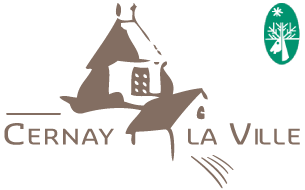Colonie_GB
A landscape painters' colony
- Détails
  |
|||||||||
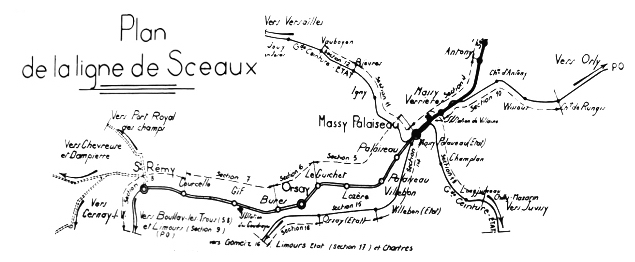
Cernay-la-Ville is situated at about 45 km south-west of Paris and about 20 km south of Versailles in the Chevreuse Valley area. Several hundreds of French and foreign painters came to the area during the second half of the 19th century. But also

Back in those days one of the main activities in Cernay were the quarries where the cobblestones for the Paris boulevards were extracted. The same cobblestones later used by the students during the May 1968 riots. CERNAY TODAY Today, being in the heart of the Natural Park of the Chevreuse Valley, Cernay-la-Ville and its surroundings attract many tourists. Some come just for a Sunday hike in the valley, but also to visit the different castles and monuments all within a 10 km radius.
Cernay-la-Ville still inspires artists today and, culturally speaking, the village is very active by organizing yearly exhibitions of the painters' colony, but also of contemporary artists. |
La Grand-place at the end of the 19th century
- Détails
Léon Germain Pelouse
- Détails
  |
|||||||||||||
|
Léon Germain Pelouse, a mid-nineteenth century landscape painter, was recently overshadowed by his Barbizon contemporaries despite his popularity at the time and the execution of several remarkable works. His compositions show an interest in France's natural landscape, the same interest as those of the Barbizon painters. An enthusiastic writer ("Art and the Paris Exposition", Scribner's Monthly, December 1878, p 277) wrote, "His style is impressive, his pictures rich and daring in color, the execution marked by the greatest breadth and freedom of handling. ". Despite never undertaking any formal artistic training, Pelouse established himself as an artist inspired by the beauty of nature. Born in 1838 in Pierrelaye (Val d'Oise) near Paris and son of a carpenter, Pelouse didn't seem destined to become a painter. Rather than starting a career as an artist, he began working at the age of sixteen as a traveling sales representative in Roubaix. This work allowed Pelouse to discover the different landscapes and villages of France. He continued this work for a long time and also served briefly in the army before starting his artistic activities. During his stay in the army, he executed his first painting in his quarters, after his colonel had given him permission to do so. At the age of 27, he left his first job to pursue a career as a painter. His determination to become an artist was so strong that he convinced his family to let him practice the career of his choice. But instead of immediately entering a school of fine arts like other artists in search of public recognition, Pelouse never studied under any teacher and became his own master, a remarkable fact. Eugène Montrosier, in Les Artistes Modernes: Peintres de Genre (Paris: Libraire Ch. Tallandier, p. 101) , thought that he did indeed have a master and wrote: 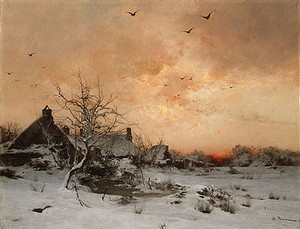
"One could write more about M. Pelouse who, without a master, by the sole force of his determination, arrived after a few years to take one of the top places among modern landscape painters. To suggest that Mr. Pelouse did not have a master may not be correct. He did have one, sincere, profound, always varied, always moving: nature! ". For Pelouse, nature may have been the most important influence on his work. He expressed regret that at the beginning of his career he did not know many other landscapists. He said, "The unfortunate thing for me…at the time when I was beginning, was that, having not worked in any atelier, I didn’t know any painter. I was even ignorant that landscape painters could cherish certain landscapes over others. "(Montrosier, p.102). By following nature as a guide, Pelouse also kept abreast of the progress of other artists working outdoors while developing its own style and dark palette. He debuted at the 1865 Salon with Environs de Precy - Oise, a souvenir of autumn. His two subsequent appearances at the show (1868 and 1869) were works inspired by the landscapes of Brittany region, particularly Pont-Aven, where he spent time working and gathering ideas. In 1873, he won his first medal, a second class prize, for the Vallée de Cernay. In 1876, he received a first class medal, "a reward that had not been awarded to a landscape painter for thirty years" (Montrosier, p.102) for Une coupe de bois à Senlisse - Seine-et-Oise and a second class medal at the 1878 Expositon Universelle where he exhibited several works. That same year, he also received the highest French distinction when he was named Chevalier de la Légion d'Honneur. Pelouse’s final Salon showing was in 1890 where he exhibited Bords de Seine; l’Ile de Tribouillard (Banks of the Seine; the Tribouillard Island) and La Seine, à Poses; vue du barrage(The Seine, at Poses, view of the dam). The previous year he had exhibited at the 1889 Exposition Universelle where he earned a gold medal.
He counted many friends among his peers who joined him in Cernay-la-Ville such as Henri Harpigny, Louis Français, Jules et Emile Breton, Ceramano, Winslow Homer, Theodore Robinson, Peder Severin Kroyer and many others. Sources and other links:
|


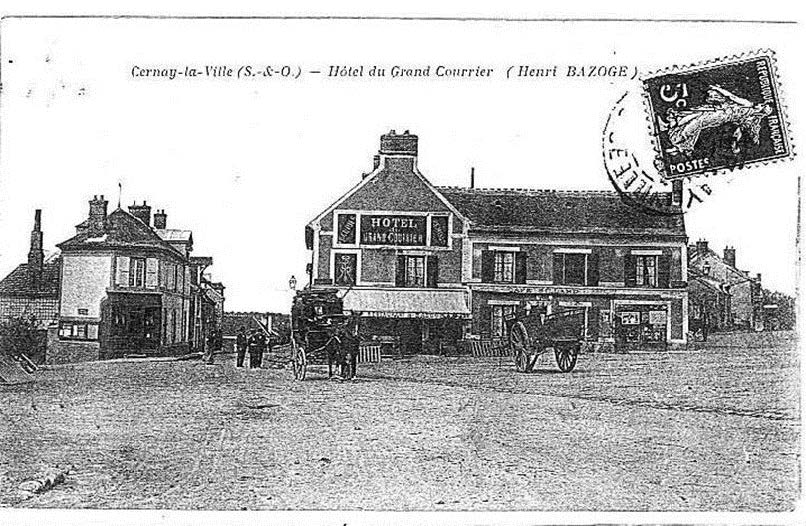 This inn, run by Isodore Legendre since 1841, is take over by Alexandre Cibeau in 1857 under the name of "Le Grand Courrier"
This inn, run by Isodore Legendre since 1841, is take over by Alexandre Cibeau in 1857 under the name of "Le Grand Courrier"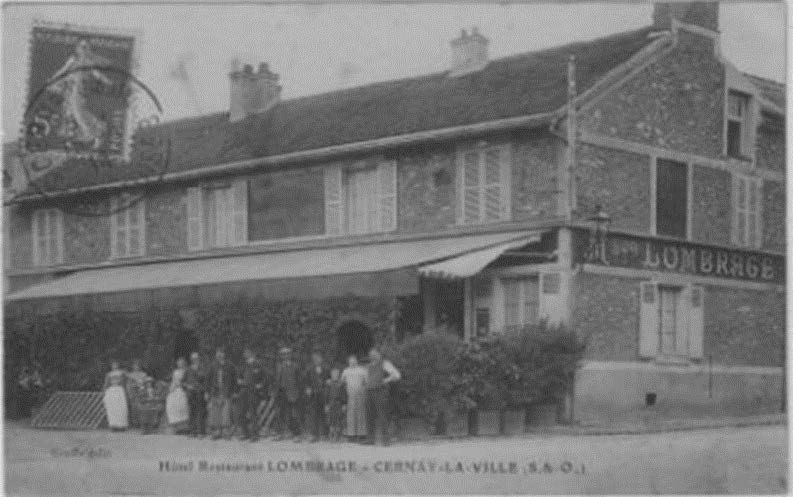 This wine merchant of 1836, becomes an Inn in 1872 under the name of l'Hôtel des Paysagistes.
This wine merchant of 1836, becomes an Inn in 1872 under the name of l'Hôtel des Paysagistes.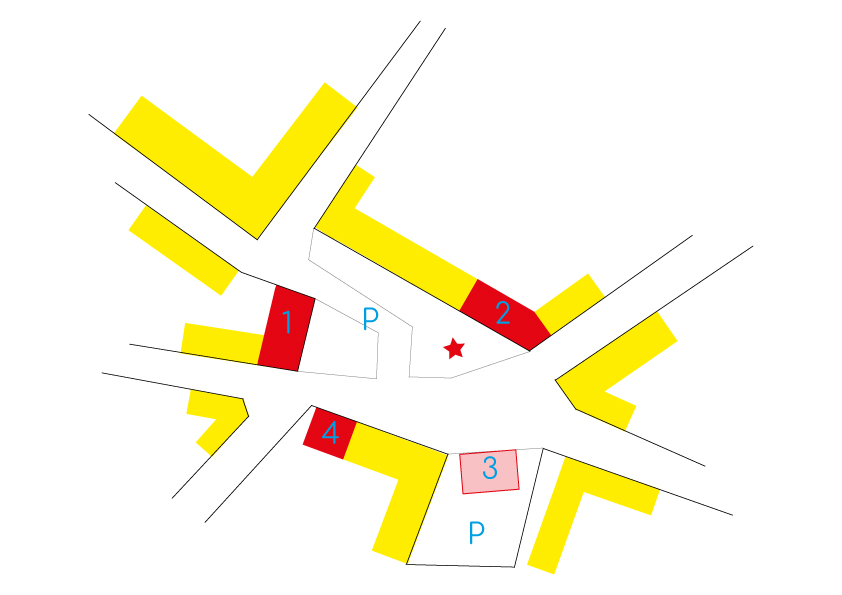
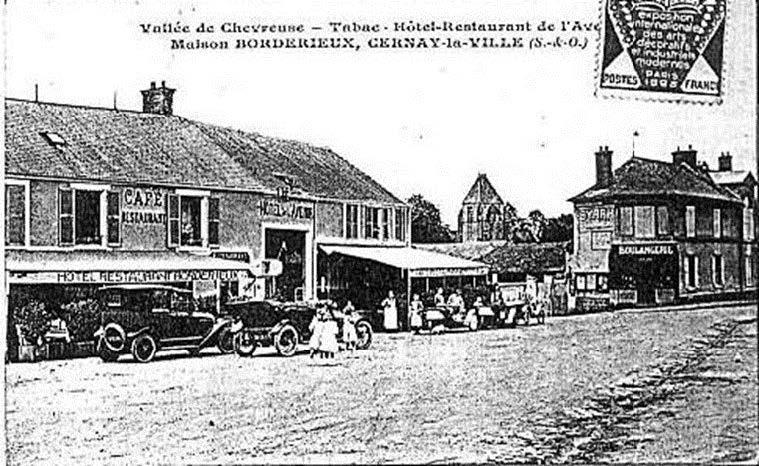 This inn, called "l'Avenir” in 1881, was originally located next to the blacksmith.
This inn, called "l'Avenir” in 1881, was originally located next to the blacksmith. This inn, privileged place of the painters, called "Au rendez-vous des Artistes chez Léopold” disappears in 1967.
This inn, privileged place of the painters, called "Au rendez-vous des Artistes chez Léopold” disappears in 1967.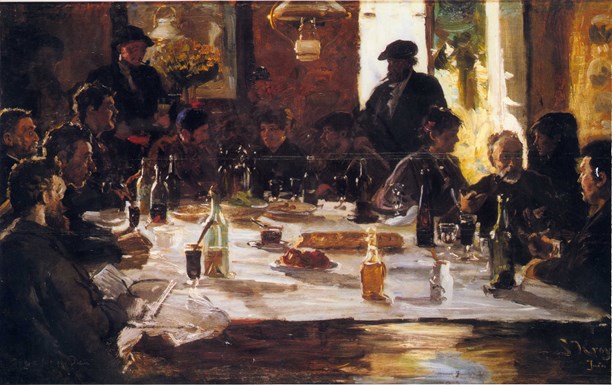 “Le déjeuner des artistes à Cernay-la-Ville” at Leopold's "Rendez-vous des Artistes"
“Le déjeuner des artistes à Cernay-la-Ville” at Leopold's "Rendez-vous des Artistes"
 By the end of his career, his style of landscape painting had been sufficiently accepted by the Salon juries, and in addition to his awards, he himself became a member of the jury seven times. While during the latter part of his career the Impressionists began to experiment with their own style of landscape painting, Peouse didn't follow this movement but instead remained in the tradition of the older Barbizon school .
By the end of his career, his style of landscape painting had been sufficiently accepted by the Salon juries, and in addition to his awards, he himself became a member of the jury seven times. While during the latter part of his career the Impressionists began to experiment with their own style of landscape painting, Peouse didn't follow this movement but instead remained in the tradition of the older Barbizon school .